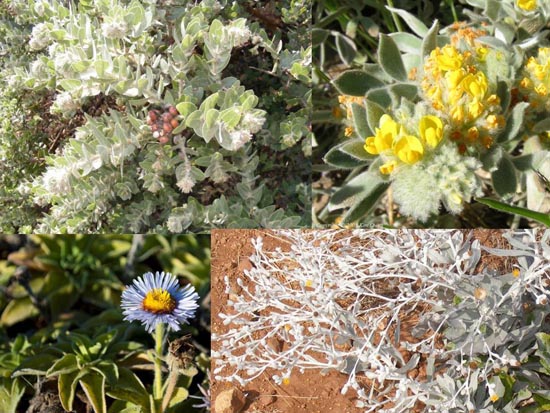The plants that thrive on Santa Cruz Island seem to include a lot of furry species. Some plants on Santa Cruz Island that have close relatives on the mainland tend to be fuzzier than those relatives. This is an evolutionary response to the lack of rain and subsurface water. Instead of relying on moist soils and rainfall inputs, these Santa Cruz Island nephelophytes (fog-specialist plants) capture fog in fine hairs. As the hairs become saturated, the water runs down the plant stem and enters the soil, soon becoming available for uptake by the roots of the plant. Some plants may also use the moisture directly through their aerial tissues.

Other adaptations to the arid conditions of the island include fleshy leaves and stems (succulents) for water storage, short lifecycles that allow the plants to mature and reproduce during the short, wet winters.

